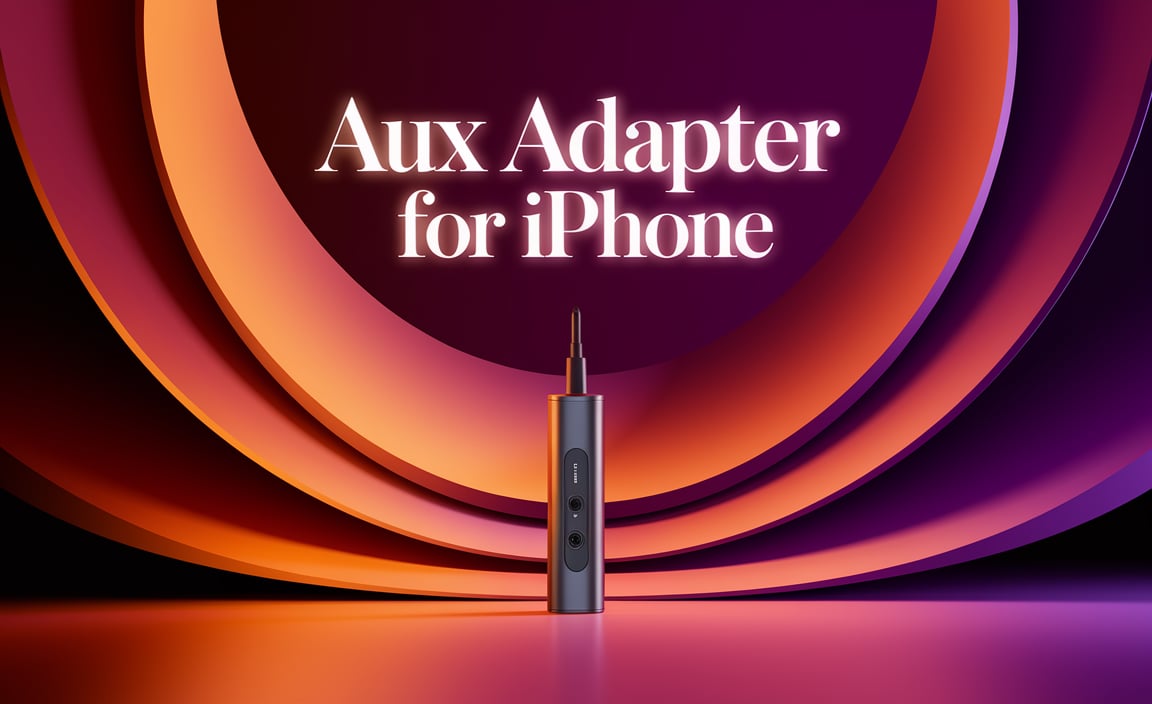Quick Summary: The Mopar battery for your Jeep Wrangler is the original, reliable power source designed to fit perfectly and handle its demanding needs. Choosing the right Mopar battery ensures optimal performance, longevity, and that your Wrangler starts strong every time, even in tough conditions.
Mopar Battery for Jeep Wrangler: Essential Power for Every Adventure
Is your Jeep Wrangler’s battery giving you trouble? Maybe it’s struggling to start on cold mornings, or you’re worried about powering your essential accessories. A dead battery can put a sudden stop to your adventures, leaving you stranded. It’s a common worry for many Jeep owners. But don’t let it stress you out! This guide is here to help. We’ll walk you through everything you need to know about Mopar batteries specifically for your Jeep Wrangler, making sure you have the reliable power your rugged ride deserves. Get ready to understand your battery and keep your Jeep roaring to life!
Why Choose a Mopar Battery for Your Jeep Wrangler?
When it comes to your Jeep Wrangler, you want parts that are built to last and perform. That’s where Mopar comes in. Mopar is the official parts and service brand for Chrysler, Dodge, Jeep, and Ram vehicles. This means Mopar batteries are designed by the same engineers who designed your Wrangler. They understand the unique power demands and the specific fit requirements of your vehicle.
Think of it like this: your Jeep Wrangler is a specialized machine. It often deals with rough terrain, extreme weather, and might have extra equipment like winches or powerful audio systems. A generic battery might struggle to keep up. A Mopar battery is engineered to meet or exceed the original equipment manufacturer (OEM) standards, ensuring a perfect fit and reliable power generation tailored to your Wrangler’s specific needs.
Understanding Your Jeep Wrangler’s Battery Needs
Your Jeep Wrangler isn’t just any car; it’s built for adventure. This often means:
- Higher Power Demands: From starting the engine in harsh conditions to powering lights, winches, off-road gear, and infotainment systems, your Wrangler’s electrical system works hard.
- Specific Fitment: The battery tray and mounting system in a Wrangler are often designed with a specific battery shape and size in mind.
- Durability: Jeep Wranglers frequently venture off the beaten path. The battery needs to withstand vibrations and shocks more than a typical car battery.
Mopar batteries are designed with these factors in mind. They are tested to ensure they can handle the demands placed on a Wrangler’s electrical system, providing consistent power and longevity.
Key Features of Mopar Batteries
Mopar batteries offer several advantages that make them a prime choice for Jeep Wrangler owners:
- OEM Quality: As the original equipment supplier, Mopar batteries are built to the exact specifications of your Jeep Wrangler. This guarantees compatibility and optimal performance right out of the box.
- Cold Cranking Amps (CCA): Wranglers often operate in climates where cold starts are a challenge. Mopar batteries generally provide robust CCA ratings, meaning they can deliver enough power to start your engine even in freezing temperatures.
- Reserve Capacity (RC): This measures how long a fully charged battery can supply power if the alternator fails. A good RC ensures that accessories can run for a reasonable time without draining the battery completely. Mopar batteries are engineered to offer sufficient RC for typical Wrangler use.
- Durability and Vibration Resistance: Mopar batteries are often built with robust internal components and secure cell construction to resist the vibrations and impacts common in off-road driving.
- Warranty: Mopar parts typically come with a solid warranty, offering peace of mind and protection for your investment. Check the specific warranty details for the battery model you choose.
Types of Mopar Batteries for Jeep Wranglers
While Mopar offers a range of batteries, they are primarily categorized by their construction and intended use. For Jeep Wranglers, you’ll typically find:
- Flooded Lead-Acid Batteries: These are the most common and traditional type of car battery. They are generally more affordable and provide reliable starting power. They require occasional maintenance, such as checking electrolyte levels, though many modern versions are “maintenance-free.”
- Absorbent Glass Mat (AGM) Batteries: AGM batteries are an advanced type of lead-acid battery. The electrolyte is absorbed into mats of fiberglass. They offer several benefits:
- Deep Cycle Capability: Better suited for applications requiring repeated deep discharges and recharges, like powering accessories when the engine is off or running winches.
- Vibration Resistance: They are more structurally sound and resistant to vibration.
- Sealed and Maintenance-Free: They are spill-proof and don’t require topping up with water.
- Faster Charging: They can accept a charge more quickly than flooded batteries.
Many modern Wranglers, especially those with start-stop technology or advanced electrical systems, are designed to use AGM batteries.
When selecting a Mopar battery, always refer to your Jeep Wrangler’s owner’s manual or consult with a dealership to determine the exact type and specifications (Group Size, CCA, RC) recommended for your specific model year and trim.
How to Identify the Right Mopar Battery for Your Jeep Wrangler
Replacing your battery can seem daunting, but Mopar makes it easier by offering parts designed specifically for your vehicle. Here’s how to find the right one:
1. Consult Your Owner’s Manual
This is the most crucial step. Your Jeep Wrangler’s owner’s manual will list the recommended battery group size, terminal type, and minimum specifications (like CCA) for your model. This information ensures you purchase a battery that physically fits and electrically meets your Wrangler’s requirements.
2. Check the Battery Label
If your current battery is still in the Jeep, you can often find its specifications printed on the label. Look for the:
- Group Size: This is a standardized numerical or alphanumeric code (e.g., Group 34, Group 35, Group 65) that indicates the battery’s physical dimensions and terminal placement.
- CCA (Cold Cranking Amps): The number of amps a battery can deliver at 0°F (-18°C) for 30 seconds without dropping below 7.2 volts. Higher is generally better, especially in cold climates.
- RC (Reserve Capacity): The number of minutes a fully charged battery can deliver 25 amps at 80°F (27°C) before its voltage drops below 10.5 volts.
3. Use Online Fitment Guides
Many automotive parts websites, including the official Mopar parts site and reputable retailers, have online tools. You enter your Jeep Wrangler’s year, make, model, and sometimes engine size, and they will show you compatible Mopar battery options.
4. Visit a Dealership or Trusted Mechanic
If you’re unsure, a Mopar dealership service department or a trusted mechanic specializing in Jeep vehicles can quickly identify the correct Mopar battery for your Wrangler.
Table: Comparing Common Jeep Wrangler Battery Group Sizes
While Mopar batteries are vehicle-specific, understanding common battery group sizes can be helpful. Always verify compatibility for your specific Wrangler model.
| Group Size | Typical Physical Dimensions (L x W x H) | Common Vehicle Applications | Notes for Wrangler Use |
|---|---|---|---|
| Group 34 | Approx. 10.2″ x 6.8″ x 7.9″ | Performance cars, some SUVs | Often a good fit for Wranglers needing more power or with aftermarket accessories. Check terminal orientation. |
| Group 65 | Approx. 11.4″ x 6.9″ x 9.4″ | Larger trucks and SUVs, including some Jeep models. | A common OEM replacement for many Jeep SUVs. Offers good capacity. |
| Group H6 (EN Size 48) | Approx. 10.9″ x 6.9″ x 7.5″ | Many European and some North American vehicles, increasingly used in modern SUVs. | May be found in newer Wranglers with advanced electronics. Check if AGM is required. |
| Group 35 | Approx. 9.1″ x 6.9″ x 8.9″ | Smaller to mid-size cars and some smaller SUVs/crossovers. | Less common for Wranglers unless specified for a particular model year. |
Note: Dimensions are approximate and can vary slightly between manufacturers. Always confirm exact measurements and terminal type for your specific Wrangler.
Installing a Mopar Battery in Your Jeep Wrangler: A Step-by-Step Guide
Replacing your Jeep Wrangler’s battery is a manageable DIY project if you’re comfortable working around your vehicle. Safety first is paramount! If you’re not confident, it’s always best to have a professional handle it.
Safety Precautions:
- Always wear safety glasses and gloves. Car batteries contain sulfuric acid, which is corrosive.
- Ensure the engine is off and the key is out of the ignition.
- Work in a well-ventilated area. Batteries can release flammable hydrogen gas.
- Never smoke or use open flames near the battery.
- Avoid dropping metal tools on the battery terminals, as this can cause a short circuit and sparks.
- Identify the positive (+) and negative (-) terminals correctly.
Tools You’ll Need:
- New Mopar battery (correct group size and type)
- Wrench set or socket set (typically 10mm, 13mm, or 1/2 inch for terminals and hold-down)
- Battery terminal cleaner brush or wire brush
- Anti-corrosion spray or grease for terminals
- Rag or shop towels
- (Optional) Pliers for stubborn clamps
- (Optional) Small pry bar or flat-head screwdriver for loosening clamps
Step-by-Step Installation:
- Locate the Battery: In most Jeep Wranglers, the battery is located under the hood, usually on the passenger side.
- Disconnect the Negative Terminal First: Using the appropriate wrench, loosen the nut on the clamp holding the negative (-) cable to the battery post. Once loose, twist and pull the cable off the post. Move it aside so it cannot accidentally touch the terminal. Never disconnect the positive terminal first.
- Disconnect the Positive Terminal: Now, loosen the nut on the clamp for the positive (+) cable and remove it from the battery post.
- Remove the Battery Hold-Down: Most batteries are secured with a bracket or clamp at the base or top. Locate the bolt(s) holding this bracket and carefully remove them with your wrench or socket set. Keep the bracket and bolt safe.
- Remove the Old Battery: Carefully lift the old battery out of its tray. Batteries are heavy (many weigh 30-50 pounds or more), so use proper lifting techniques or get help if needed.Tilt it slightly if necessary to clear obstacles.
- Clean the Battery Tray and Cables: Inspect the battery tray for corrosion or damage. Clean any debris. Use your battery terminal brush to thoroughly clean the inside of the cable clamps and the posts on the new battery. This ensures a good electrical connection.
- Install the New Mopar Battery: Carefully place the new Mopar battery into the battery tray, ensuring it sits correctly and is oriented with the positive and negative terminals in the same position as the old battery.
- Secure the Battery: Reinstall the battery hold-down bracket and tighten the bolt(s) securely. The battery should not move. Over-tightening can damage the battery case, so just make it snug.
- Connect the Positive Terminal First: Slide the positive (+) cable clamp onto the positive battery post. Tighten the retaining nut firmly.
- Connect the Negative Terminal: Slide the negative (-) cable clamp onto the negative battery post and tighten the nut securely.
- Apply Anti-Corrosion Protection: Apply a thin layer of battery terminal grease or a specialized anti-corrosion spray to the terminals and clamps. This helps prevent corrosion and ensures good conductivity.
- Final Check: Ensure all connections are tight and the battery is secure. Close the hood.
- Start Your Jeep: Start the engine to ensure everything is working correctly. Your dashboard lights and accessories should function normally.
Proper Disposal: Do not throw old batteries in the regular trash. They are hazardous waste. Most auto parts stores and service centers will accept old batteries for recycling. Check with your local waste management facility for proper disposal methods.
Maintaining Your Mopar Battery for Longevity
Even the best battery needs a little care to ensure it lasts as long as possible, especially in a demanding vehicle like a Jeep Wrangler. Here’s how to keep your Mopar battery in top shape:
- Regular Cleaning: Periodically check the battery terminals and surrounding area. If you see white, powdery corrosion, clean it off with a mixture of baking soda and water and a wire brush. Rinse carefully and dry thoroughly. Applying a dielectric grease or anti-corrosion spray after cleaning can prevent future buildup.
- Check for Loose Connections: Ensure the battery cables are, and remain, tightly connected. A loose connection can cause starting problems and prevent the battery from charging properly.
- Inspect for Damage: Look for any cracks or leaks on the battery case. If you find any, the battery should be replaced immediately.
- Reduce Accessory Drain: Be mindful of using accessories (like lights, stereos, winches) when the engine is off. Prolonged use can drain the battery. Consider a battery monitor if you frequently use accessories with the engine off.
- Avoid Deep Discharges: While some batteries (like AGM if designed for it) can handle deep discharges better than others, it’s best for overall battery life to avoid draining the battery completely.
- Monitor Charging System: Ensure your Jeep’s alternator is functioning correctly. An alternator that isn’t charging properly will impact battery life. A simple voltage test with a multimeter can check this. Your Mopar battery relies on a healthy charging system.
- Consider a Battery Tender for Long Storage: If you store your Wrangler for extended periods (e.g., several months), a smart battery charger or tender (trickle charger) can maintain the battery’s charge and prevent sulfation, which degrades battery performance.
When to Consider Upgrading Your Wrangler Battery
While a Mopar OEM replacement is always a solid choice, there are times when an upgrade might be beneficial:
- Increased Power Demands: If you’ve added significant electrical upgrades like a winch, extra lighting (LED bars, rock lights), a high-power sound system, or rooftop tent power systems, your stock battery (even a Mopar one) might struggle to keep up. An AGM or a heavy-duty Mopar battery designed for higher amp-hour ratings could be a better fit.
- Extreme Climate Conditions: If you frequently operate in very hot or very cold climates, a battery with higher CCA (for cold starts) or higher RC (for heat tolerance and sustained power) might offer better reliability.
- Frequent Off-Roading/Overlanding: If your Wrangler spends more time off the pavement and away from starting opportunities, a deep-cycle or dual-purpose battery (often AGM) can provide more power for accessories without risking a dead start battery.
- Planned Enhancements: If you know you’ll be adding accessories in the future, proactively upgrading to a more robust battery system can save you hassle down the line.
When upgrading, always ensure the new battery group size physically fits in your Wrangler’s battery tray and that your charging system can adequately recharge the higher-capacity battery. Consult with a Jeep specialist or battery expert for recommendations on suitable aftermarket or heavy-duty Mopar options.
For more on battery health and technology, the U.S. Department of Energy provides excellent resources on battery technologies and maintenance.
Frequently Asked Questions (FAQ)
Q1: What does “Mopar” mean for my Jeep Wrangler battery?
Mopar is the official parts brand for Jeep. A Mopar battery is an Original Equipment Manufacturer (OEM) part, meaning it’s designed and built to the same specifications as the battery that came with your Wrangler when it was new. This ensures a perfect fit, correct electrical performance, and the reliability Jeep owners expect.
Q2: How often should I replace my Mopar Jeep Wrangler battery?
Most car batteries, including Mopar ones, last between 3 to 5 years under normal conditions. However



